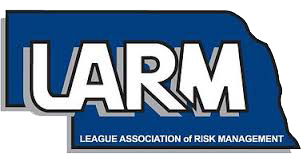
Since the advent of computers, there have been hackers whose goal is to log into someone else’s computer for mostly nefarious reasons. The recent cyberattack on Colonial Pipeline ended in a payment of $5 million paid to the hackers and encouraged other hackers to redouble their efforts to do the same. This cyber-extortion is happening even in small-town Nebraska. The problem isn’t going to go away soon, but there are steps that people can take to thwart would-be hackers.
Cybersafety training is a must for anyone who uses your organization’s computers. Hackers may send employees a misleading email message with a link to install “essential software” that is then used to record and send hackers every keystroke, username, and password. All it takes is one person on your network to click on a deceptive link to put your whole computer system at risk. In some instances, the installed software encrypts all the company files until a ransom is paid. It’s vital to train anyone that has access to your organization’s computer to never click on a link in an email without first verifying its authenticity, even if it looks like it comes from a trusted source. It’s relatively easy for hackers to send emails that look like they came from co-workers’ email addresses. Always check before you click when it comes to emails.
You must make sure you have robust anti-virus software on each of your computers and keep it updated.
Install firewall software on each of your computers to regulate traffic coming into the computer. It’s also best to have a physical firewall, a piece of equipment installed between your network and the Internet that controls incoming and outgoing traffic on your server.
Keep up on your software updates. Updates, or what’s commonly known as patches, are fixes to vulnerabilities in software that hackers might have been able to use to get into computer systems.
Back up your data regularly and preferably off-site. If a hacker does gain control of your data and encrypts it to get a ransom from you, you will have a backup copy to rely on.
Make it a policy for employees to change passwords periodically. Regularly changing a password to one that includes letters, numbers, and symbols makes it virtually impossible for a hacker to discover.
No matter where the work location, anytime a person is connected to the Internet, there is the likelihood that a hacker is trying to gain access to their computer/computer network. Warn employees that public Wifi can be particularly dangerous as many public Wifi sites do not have adequate security.
Suppose your organization does not have an IT manager or employee with sufficient knowledge about cyber-security. In that case, it may be time to contract with a company that can be responsible for making sure your computer systems and data are sufficiently protected.
Lastly, have cyber insurance coverage. Adequate coverage will help you pay for losses if hackers do make it through security and into your systems.
There’s no doubt that a hacker has tried to get into your data already. Make safe cyber practices a priority in your organization to prevent a breach of your valuable information.
